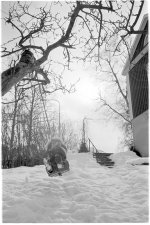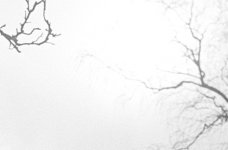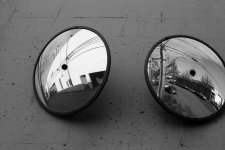Hey Matti,
Allan, maybe I should just expose my other films a bit more. Seriously, I think I often underexpose. And if I just touch the curves in Photoshop these pictures will have some deep shadows. But the negs look quite dark, could it be that the water we have is very soft? I read somewhare that Rodinal was sensitive towards that.
Well, exposure control is always tough. Setting the EI is one step, but proper metering is the other. If you are using any kind of averaging meter, and you like what you're getting out of those scans, perhaps you are underexposing with other film. Try rating all of them a bit slower - maybe TXT at 250 to start. That will help you get your exposure where you want it. The only problem with doing that across the board is that perhaps your "real" speed for TXT is 320, and you've now increased grain ever so slightly by overexposing by 1/3 of a stop.
When you say the negs are dark, do you mean as a negative or as a positive? If you mean as a negative, meaning they are dense, then you probably over-developed. The slower the film, the more inherently contrasty it is, and the more sensitive it is to development time. Reduce by at least 10% and see if that helps. It'll make scanning easier, too. Again, you gotta get your process calibrated.
I forget what Rodinal's response to soft water is...hm.
I find TXT in D76 1+1 to be closer to 320, using spot-metering of shadows. But you get a grittier look as you under expose, which is a classic look for TXT.
I just bulk-loaded 10 rolls of Efke 25 after reading your thread. I'll go shoot it next weekend. And I'll put up those R25 vs. APX 25 scans then, too. Happy shooting.
allan






